
Sidney Cotton (1894-1967)
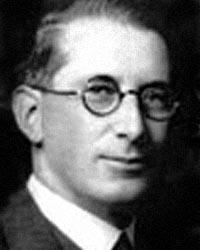 Sidney Cotton
Sidney Cotton
http://www.aceflyer.com
Queensland's Sidney Cotton was born in 1894 and whilst still in his teens built an efficient light car with drive components that continued to be used in the later Frazer Nash cars.
At 21 he became a Royal Naval Air Service pilot and with only 5 hours solo he was sent to the front line in WW1.
It was whilst with the RNAS that he devised camouflage for aircraft, an upward firing gun mounting, long range bombing methods and other inventions.
When the "Red Baron", Manfred von Richthoven was shot down in WW1, he was found to be wearing a 'British' flying suit designed by Cotton.
After the war he moved to Canada where aerial surveying and game spotting were developed, around what later became the Botwood, NF seaplane base. Just before WW2 he toured Europe taking aerial photographs of strategic sites.
His frequent visits to Berlin drew the attention of Colonel Fred Winterbotham an MI-6 agent in the British Foreign Office who who had maintained an interest in aerial photo-reconnaissance while mainstream military interest in it had faded after the war. Cotton relentlessly pursued the goal of high-altitude reconnaissance.
He innovated suitable aircraft camouflage for the mission - using duck-egg blue paint on MI-6's Lockheed 12A, modifying the air frame to mount hidden cameras, and developing air-conditioning for the cameras to keep them running at high altitude. ...more
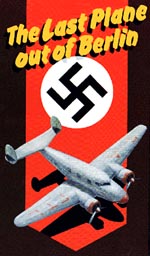 The Last Plane out of Berlin
The Last Plane out of Berlin
http://www.abc.net.au
Jeff Watson Productions, 2000, 55mins., VHS PAL
Sid Cotton, spy, aviator, inventor - an Australian who called a spade a bloody shovel and who flew the last plane out of Berlin before WWII erupted.
This is a remarkable story about a remarkable Australian who was able to fool the German High Command to fly safely in and out of Germany as that country prepared for war. Cotton took photographs that revolutionised aerial military photography forever. Sidney Cotton loved adventure for adventure's sake, he continually defied the orthodox and had a notable record for getting what he wanted by hook or by crook.
The debonair Queensland businessman was born near Proserpine, the son of a prominent cattle baron. In the days leading up to the outbreak of World War Two he flew aerial espionage flights over Germany with secret cameras hidden in the belly of his private plane. He worked on behalf of the French Deuxieme Bureau and the British M16 and was a friend of Ian Fleming, creator of James Bond.
He was a confidante of top ranking Nazis like Hermann Goering and Albert Kesselring. He acted as a go-between in negotiations between Goering and the British Prime Minister, Neville Chamberlain. Cotton's work in aerial espionage and photographic intelligence was to be instrumental in the foundation of the PRU (Photographic Reconnaissance Unit) of the Royal Air Force.
Just before the Nazis marched into Poland in September 1939 Cotton flew his plane to Berlin on a peace mission which could have changed the course of history. Cotton was to bring Hermann Goering to England for talks with Neville Chamberlain. Cotton was lucky to escape with his life, his was the last civilian plane to fly out of Berlin before the outbreak of World War II. On the way home as a final insult he took sneak pictures of the German Navy at anchor as well as Hitler's personal yacht, the Grille.
The Last Plane Out Of Berlin
http://www.abc.net.au
Director: Jeff Watson. A Jeff Watson Production
The Last Plane Out Of Berlin is the story of Sidney Cotton - Australian born aviator, inventor and aerial spy.
If Sidney Cotton had lived a few centuries earlier he would have made a splendid buccaneer. He loved adventure for adventure's sake, he continually defied the orthodox and had a notable record for getting what he wanted by hook or by crook. The debonair Queensland businessman was born near Proserpine, the son of a prominent cattle baron.
In the days leading up to the outbreak of World War Two he flew aerial espionage flights over Germany with secret cameras hidden in the belly of his private plane. He worked on behalf of the French Deuxieme Bureau and the British M16 and was a friend of Ian Fleming creator of James of Bond.
He was a confidante of top ranking Nazis like Hermann Goering and Albert Kesselring. He acted as a go-between in negotiations between Goering and the British Prime Minister, Neville Chamberlain.
Cotton's work in aerial espionage and photographic intelligence was to be instrumental in the foundation of the PRU (Photographic Reconnaissance Unit) of the Royal Air Force.
And just before the Nazis marched into Poland in September 1939 Cotton flew his plane to Berlin on a peace mission which could have changed the course of history. Cotton was to bring Hermann Goering to England for talks with the Neville Chamberlain. Cotton was lucky to escape with his life, his was the last civilian plane to fly out of Berlin before the outbreak of World War II.
On the way home as a final insult he took sneak pictures of the German navy at anchor as well as Hitler's personal yacht, the Grille.
"I am an Australian" said Sidney Cotton "I call a spade a bloody shovel!"
Sidney Cotton
http://users.chariot.net.au
Sidney Cotton was born in 1894 near Proserpine, Queensland. He was in his mid-teens when he encountered his first aircraft on a long family visit to England, and began frequenting nearby Brooklands aerodrome until the family returned to Australia in 1913.
With no special training, Sidney designed and built his own car, which he had little time to enjoy. After the outbreak of World War 1, Cotton went to England, enlisting in 1915 in the Royal Naval Air Service. After five hours solo he began flying Channel patrols.
Cotton took off after an alert in his Sopwith 1Omega-strutter in the winter of 1915-16. He had been working on its engine and had not had time to change from his oil-covered overalls. Back at their base afterwards, someone asked Cotton why he was the only pilot who did not seem to be feeling the cold.
Cotton realised the oily overalls had contained his body heat. He took leave and, in London, had a military outfitter make up a number of suits from waterproof material lined with fur and a layer of silk. He registered the design as the Sidcot suit, which later became standard issue for the RAF and other air forces. ...more
Lockheed 12-a, G-AFTL (N12EJ)
http://www.pepsiteam.com
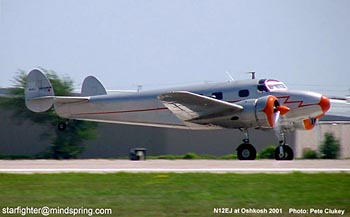
Lockheed N12EJ at Oshkosh Air Show 2001
Photo : Pete Clukey
http://www.adastron.com
download a 750pixel image
This sleek Lockheed, now registered as N12EJ, was born in the turbulent times of threatened world war. Hitler dared to march into Poland; Mussolini built submarine bases in the Middle East.
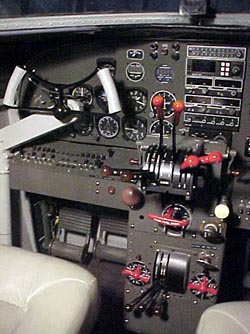
Lockheed N12EJ, the restored cockpit
http://www.pepsiteam.com
download a 500pixel image
This plane, then G-AFTL, arrived in Southhampton, England in 1939 and the clever Australian inventor and pilot Sidney Cotton took it on sortie after sortie to photograph Italian and German targets.
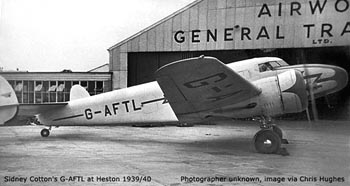
Lockheed 12-a, G-AFTL (N12EJ)
http://www.adastron.com
download a 750pixel image
A designer of color film, Cotton flew as a businessman promoting his product while he daringly took spy photographs from this very airplane!
Cotton was so bold that he was secretly photographed the military buildup near the Rhine while a German officer, the Commandant of Tempelhof Airport, flew in his co-pilot's seat!
Cotton took hundreds of valuable photographs of Nazi Germany's war buildup, and as the outbreak of war neared, Cotton escaped, flying this Lockheed to England.
Steve Oliver 303-478-4853; eMail: pepsiteam@aol.com
Lockheed 12A - c/n 1203 : A Detailed History
http://users.argonet.co.uk
© V.N. Smith, 1992
This Lockheed 12A was bought by the British Government to be used on illicit photo-reconaissance flights using the business interests of the Australian pilot Sidney Cotton as a cover. After being damaged during a German raid on Heston Airport. it was shipped to the United States, repaired and sold to the New Zealander, Lowell Yerex, who operated a number of airlines in Central America. Returning to the United States in 1948, it survives to the present day.
Sources: "Aviator Extraordinary" by Sidney Cotton, "Yerex of TACA" by David Yerex, 1985; Federal Aviation Authority (USA) and Civil Aviation Authority (UK) archives; RAF Museum archives and the Public Record Office files
All dates quoted are dd/mm/yy, not all wartime flights are known
| 01.10.36
| Became NC16077 to Lockheed Aircraft Corp., Burbank, CA two 450hp P&W Wasp Junior SB2 engines, s/ns 505 and 506
| | 03.10.36
| Continental Oil Co., Ponca City, OK
| | 31.10.36
| Accident near Hunt, TX, repaired by makers, total flying time (f/t) 70.50 hours
| | 00.03.37
| Repaired by Spartan School of Aeronautics, Tulsa, OK
| | 00.04.37
| RCA radio compass installed by Booth-Henning Inc, Love Field, Dallas, TX
| | 18.06.37
| Inspected at Tulsa, OK, 151.20 hours f/t
| | 09.08.38
| Inspected, 518.05 hours f/t, engine s/ns 491, 520, (Reportedly owned by Herschbach Drilling Co. - not in FAA file)
| | 24.04.39
| U.S. marks cancelled, sold by Gillies Aviation Corp. to F. Sidney Cotton, London, England, U.S. Export CofA E.4978, 658.49 hours f/t
| | 28.04.39
| Shipped from U.S.A. on S.S. "Aquitania"
| |
| Assembled by Cunliffe-Owen Aircraft Ltd., Eastleigh, Southampton, painted light green for camouflage reasons
| | 11.05.39
| Local flight at Southampton, Cotton, R.H. Niven (also all other pre-war flights unless shown), to Heston same day
| | 15.05.39
| Became G-AFTL, Certificate of Registration No.9098 to British Airways Ltd. as a cover
| |
| Returned to Cunliffe-Owen for installation of two 70 gallon tanks, work completed by Airwork Ltd., Heston, AUW 11,300lb., range 1,600 miles, fuselage hatches for F.24 cameras fitted
| | 08.06.39
| Aeronautical Research & Sales Corporation Ltd., Heston
| | 11.06.39
| Certificate of Validation No. V.195 issued
| | 14.06.39
| 08.57 left Heston for Malta
| | 15.06.39
| Photo sortie over Sicily from Malta
| | 16.06.39
| Malta-Cairo via photo sortie over Dodecanese Islands
| | 19.06.39
| Cairo-Kamaran Island via photo sortie over Massawa, to Aden same day
| | 20.06.39
| Photo sortie over Italian Somaliland, second abortive sortie same day
| | 21.06.39
| Aden-Kamaran via photo sortie over Eritrea
| | 22.06.39
| Kamaran-Atbara via photo sortie over Massawa, to Almaza, Cairo same day, then to Heliopolis, Cairo
| | 24.06.39
| Heliopolis-Malta via photo sortie over Libyan coast
| | 25.06.39
| Malta-Lyon-Heston
| | 08.07.39
| Le Bourget-Heston-Birmingham-Heston
| | 12.07.39
| Heston-Brussels-Heston
| | 15.07.39
| Local flight at Heston, to Ramsgate next day
| |
| At this period fitted with Leica cameras in the wings
| | 26.07.39
| Heston-Templehof, Berlin, returned next day, photo sorties on both flights
| | 28.07.39
| Heston-Brussels, Cotton, with C.G. Grey ("Aeroplane" editor), then to Frankfurt, with Niven, Margaret Gilruth
| | 29.07.39
| Local flight from Frankfurt, Cotton, with Commandent of Templehof Aerodrome, used to photograph Mannheim area
| | 31.07.39
| Frankfurt-Brussels, to Heston with Cotton only
| | 05.08.39
| Heston-Lempme (possibly Lympne ?)-Heston
| | 13.08.39
| Heston photo sortie over Jever aerodrome and Wangeroog, then Heston-Le Touquet-Heston
| | 17.08.39
| Heston-Templehof, returned on 19th, photo sorties on both flights
| | 19.08.39
| Heston-White Waltham-Heston, Niven
| | 22.08.39
| Heston-Berlin, photo sortie
| | 24.08.39
| Berlin-Heston, the last private British aircraft to leave Germany, photo sortie
| | 26.08.39
| Heston-Paris-Dinard-Heston
| | 27.08.39
| Photo sortie over Nordeney, Heliogoland and Sylt, Cotton, Niven and Miss Pat Martin
| | 29.08.39
| Photo sortie over Wilhelmshaven and Schillig Roads
| | 04.09.39
| Heston-Shoreham-Paris and return, Cotton and Winterbothom
| | 12.09.39
| Photo sortie to west coast of Ireland
| | 15.09.39
| Photo sortie to Flushing and Ymuiden, landed at Farnborough for photo processing
| | 20.09.39
| Heston-Farnborough-Heston, Cotton, also on 22nd, 23rd, 25th, 27th and 30th
| | 00.10.39
| Attached to Photographic Development Unit, Heston, retained it's civil status
| | 02.10.39
| Heston-Farnborough-Heston, F/Lt Niven
| | 07.10.39
| Heston-Farnborough-Heston, Cotton
| | 12.10.39
| Heston-Farnborough-Heston, Wing Commander Cotton, had photographed the Belgian coast
| | 16.10.39
| Eastleigh-Farnborough-Heston, Cotton
| | 18.10.39
| Heston-Farnborough-Heston, Cotton, also on 20th
| | 09.11.39
| France-Farnborough-Heston, Cotton
| | 13.11.39
| Heston-Farnborough-Heston, Cotton
| | 20.11.39
| Heston-Challerange, France
| | 24.11.39
| Heston-Farnborough-Heston, Cotton, last Farnborough logged movement
| | 27.03.40
| 16.00, Heston via Shoreham to Dieppe (log of Observer Corps, No.19 Centre, Bromley)
| | 12.04.40
| Photo sortie from Heston along English south coast to test efficiency of aircraft reporting system
| | 18.04.40
| Heston-France
| | 09.05.40
| Coulommiers-Heston
| | 11.05.40
| Meaux-Le Luc
| | 12.05.40
| Le Luc-Corsica-Le Luc
| | 15.05.40
| Le Luc-Coulommiers-Tigreaux-Heston
| | 06.06.40
| Flown to Le Luc, to Hyeres and Ajaccio, Corsica next day
| | 08.06.40
| Ajaccio-Le Luc-Coulommiers
| | 09.06.40
| Coulommiers-Chateauneuf, Orleans
| | 11.06.40
| Chateauneuf-Marseilles
| | 14.06.40
| Marseilles-Chateauneuf-Poitiers-Heston
| | 15.06.40
| Heston-Poitiers
| | 16.06.40
| Poitiers to Fontenoy-le-Conte, to La Rochelle, Le Luc, Poitiers and Fontenoy
| | 17.06.40
| Fontenoy-Chateaurroux-Bordeaux-Fontenoy-Jersey
| | 18.06.40
| Jersey-Heston
| | 25.08.40
| Certificate of Validation expired
| | 19.09.40
| 22.55, badly damaged when a parachuted mine hit the hangar at Heston
| |
| Shipped to Lockheed, Burbank for rebuilding, sold
| | 21.11.42
| Became NX21707 to Lowell Yerex, 9 Rockefeller Plaza, NYC for a ferry flight
| | 21.11.42
| Flown from Burbank to Brownsville, TX
| | 24.11.42
| U.K. registration changed to Lowell Yerex, Tegucigalpa, Honduras
| | 05.01.43
| Became VP-TAI to British West Indian Airways, U.K. marks cancelled on the same date
| | 00.12.44
| Withdrawn from service for major overhaul in USA
| | 30.01.45
| Weighed at Lockheed factory for Balance Report
| | 10.04.48
| Sold to Dan Hartman Airways Inc, Harrisonburg, VA, became N1161V
| | 20.04.48
| Dan Hartman and W. Clayton Lemon, Roanoke, VA
| | c0.05.48
| Trinidad marks cancelled
| | 21.10.48
| Morrison Drilling Co. Inc., El Dorado, KS for $20,000
| | 12.07.50
| Old Dominion Box Co. Inc., Charlotte, NC
| | 06.12.52
| CofA renewed, 4,286.15 hours f/t
| | 04.12.53
| CofA renewed, 4,396.00 hours f/t
| | 08.02.55
| CofA renewed, 4,446.10 hours f/t
| | 15.03.55
| Gregory-Poole Equipment Co., Raleigh, NC
| | 12.09.55
| W. Clayton Lemon, Roanoke, VA
| | 26.10.55
| The Babb Co. Inc., Newark, NJ
| | 01.03.56
| CofA renewed, 4,546.50 hours f/t
| | 29.05.58
| M.M. Sundt Construction Co., Tucson, AZ (registered 23.7.59)
| | 14.06.60
| Hudgin Airservice, Tucson, AZ
| | 21.10.60
| Place & Place, Architects, Tucson, AZ
| | 23.03.63
| Arthur Eugene Magee, Tucson, AZ
| | 24.02.64
| Smyer Aircraft Co. Inc., Arkansas City, KA
| | 25.05.69
| George D. Rice and Dolores A. Rice, Corona, CA, approved for dropping skydivers
| |
| Landed wheels up (or u/c collapsed ?) in California
| | 10.01.74
| Arthur E. "Art" Scholl, dba Art Scholl Aviation, Riverside, CA, damage repaired
| |
| Fitted with 3-bladed Hartzell propellers, approved 18.04.74
| |
| Used in Warner Bros film "Doc Savage", also in a NBC film on Amelia Earhart, CBS "Spencer's Pilots" series and an EMI TV Howard Hughes film
| | 19.01.78
| Transferred to Special Purposes CofA, 5,994.5 hours f/t (possibly for testing Nav Flite II autopilot installation)
| | 27.04.78
| Reverted to Standard CofA, 6,011.2 hours f/t
| | 00.05.80
| By this date based at Rialto, CA
| | 00.01.83
| Wind damage to tail section repaired
| | 24.04.87
| Judith A. Scholl, dba Art Scholl Aviation, Rialto, CA (after Art Scholl's death while filming for "Top Gun")
| | 13.03.90
| Blackacre Land Co., Livingston, MT
| | 10.07.90
| Steve R. Oliver and Suzanne Asbury-Oliver, Forest Grove, OR
| | 29.10.90
| Became N12EJ, same owners
| | 11.03.91
| Seen at Space Centre Executive Airport, Titusville, FL, still marked N1161V
| | 00.04.92
| Seen at Barstow, FL as N12EJ
| | 00.07.01
| Seen at Oshkosh, WI
|
|





